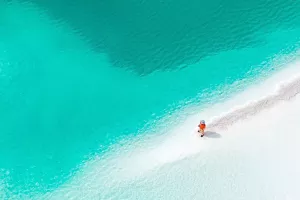Running water is a popular subject for long-exposure photography, allowing photographers to capture the beauty of water in motion with a dreamlike and silky texture.
However, in order to capture good long-exposure pictures of flowing water, photographers must pay attention to several technical details. In this article, we will provide tips on how to capture beautiful long-exposure photos of running water.
Focus
When shooting waterfalls, a small aperture is typically used due to the slow shutter speed.
To ensure that the waterfall is in focus, it is best to choose a focus point in the middle of the waterfall or a stone in the middle of the water flow. If there are no stones or branches in the middle of the waterfall, focus on objects close to the waterfall.
Use a tripod
A tripod is an essential piece of photography equipment for improving photo quality. To capture silky and delicate flowing water, a slow shutter speed is necessary, making it impossible to shoot with a handheld camera.
If there is no tripod available, try to fix the camera on a nearby rock or the ground and use the shutter release or time-lapse self-timer to complete the shooting.
Choose the right filter
Using appropriate filters can make the picture softer and more natural. One of the more commonly used filters for long-exposure water photography is the ND filter, which reduces the amount of light entering the camera, making the shutter speed slower and capturing a softer water effect.
Adjust exposure time
Exposure time is a crucial factor in capturing the effect of long-exposure flowing water and should be adjusted according to the actual shooting situation. The longer the exposure time, the higher the fineness of the flowing water.
However, too long of an exposure time can lead to overexposure of the picture, affecting the quality of the photo. Therefore, it is essential to adjust the exposure time according to the actual situation.
Pay attention to the camera angle
Shooting angle is also an essential factor affecting the effect of long-exposure flowing water. Different angles will show different flowing water effects.
Experiment with different angles to find the best shooting angle. For example, shooting from below a stream of water can emphasize its power, while shooting from above can bring out its softness.
Adjust white balance
When shooting long-exposure water, changes in light and the presence of air bubbles in the water may cause the white balance of the photo to deviate, resulting in unrealistic colors. Adjustments can be made in post-processing to make the color of the photo more realistic and natural.
Control aperture size
In long-exposure shooting, the size of the aperture will affect the quality of the photo. A smaller aperture increases the depth of field, resulting in sharper photos.
However, a smaller aperture also allows less light to enter the camera, resulting in underexposure. Therefore, a balance must be found between aperture size and exposure time to achieve the best exposure parameters.
Be aware of your surroundings
When shooting long-exposure water, it is essential to pay attention to the influence of the surrounding environment. Strong winds can cause tree branches to shake, affecting the clarity of the photo.
Scenic spots with a large flow of people may affect the shooting angle and effect. Therefore, it is necessary to conduct research in advance and choose a suitable shooting location.
Capturing beautiful long-exposure photos of running water requires attention to many details and constant trial and adjustment. By following the tips outlined above, photographers can easily capture stunning photos of running water with a dreamlike and silky texture.


